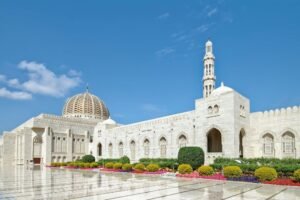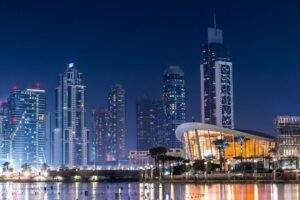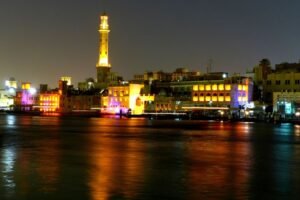Introduction
Singapore’s transformation from a small fishing village to a thriving global metropolis is a testament to its resilience and adaptability. A crucial chapter in this evolution was its colonial past, which significantly influenced its political, economic, and social structures. British colonial rule, spanning from 1819 to 1963, left an indelible mark on Singapore’s modern identity, shaping its governance, education system, infrastructure, and multicultural society. This blog delves into the profound impact of colonial rule on Singapore and how it continues to shape its present and future.
The Establishment of British Rule

Singapore’s colonial history began in 1819 when Sir Stamford Raffles established it as a trading post for the British East India Company. This strategic decision was driven by Singapore’s geographic location, which made it an ideal hub for maritime trade. The British formalized their control through the Anglo-Dutch Treaty of 1824, officially making Singapore a crown colony in 1867.
The early years of British rule saw rapid development, as Singapore became a free port attracting merchants from China, India, and the Middle East. The colonial administration focused on turning Singapore into a regional economic powerhouse, which laid the foundation for its modern economy.
Economic Impact of Colonial Rule
One of the most enduring legacies of British rule was the establishment of Singapore as a global trading hub. The British introduced a laissez-faire economic policy, allowing free trade to flourish. This policy attracted diverse communities and businesses, fostering an entrepreneurial spirit that remains integral to Singapore’s economy today.
The colonial administration also developed key infrastructures such as ports, roads, and railways to support trade. The Port of Singapore, which emerged as one of the busiest in the world, continues to play a pivotal role in the nation’s economy. Furthermore, British banking institutions and financial systems laid the groundwork for Singapore’s emergence as a financial center.
Political and Administrative Influence

British colonial governance introduced a structured administration that influenced Singapore’s modern political system. The British established a centralized bureaucracy with appointed governors, which set the precedent for a strong, stable government.
While the colonial government was largely autocratic, it did introduce some elements of representative governance. The Legislative Council, formed in the 1860s, eventually paved the way for local political participation. By the mid-20th century, increasing political consciousness led to the formation of local political parties, culminating in Singapore’s push for self-governance and eventual independence.
The Legal and Judicial System
The British introduced the English common law system in Singapore, which remains the foundation of its legal framework today. The judiciary was structured with British legal principles, ensuring the rule of law and judicial independence.
This system has contributed to Singapore’s reputation as a country with strong legal institutions and an efficient judicial process. The emphasis on law and order during colonial rule persists in modern Singapore’s governance, ensuring a low crime rate and a business-friendly legal environment.
Educational and Linguistic Impact
Another significant colonial legacy is Singapore’s education system. The British introduced English as the medium of instruction, which facilitated communication and commerce within the diverse population. This decision positioned Singapore as a globally competitive nation, as English remains the primary language of business, governance, and education.
The British also established schools that emphasized discipline, academic excellence, and civic responsibility. Institutions such as Raffles Institution and Anglo-Chinese School, founded during the colonial era, continue to be among the top educational institutions in Singapore.
Multiculturalism and Social Structure
Colonial rule played a critical role in shaping Singapore’s multicultural society. The British implemented a policy of racial segregation, organizing communities into distinct ethnic enclaves such as Chinatown, Little India, and Kampong Glam. While this initially reinforced racial divisions, it ultimately contributed to the rich cultural diversity that defines modern Singapore.
Over time, the government has worked to integrate various ethnic groups while preserving their unique cultural identities. Today, Singapore’s multicultural policies promote racial harmony and social cohesion, making it one of the most diverse yet united nations in the world.
Urban Planning and Architectural Legacy
The British left a lasting imprint on Singapore’s urban landscape. Colonial-era buildings such as the Raffles Hotel, Victoria Theatre, and the former Supreme Court showcase European architectural influence. These heritage sites stand as reminders of Singapore’s colonial past and are preserved as part of its national heritage.
The British also introduced structured urban planning, which laid the foundation for Singapore’s modern cityscape. The efficient road networks, land-use planning, and public housing policies of today can be traced back to colonial-era governance.
Challenges and Negative Aspects of Colonial Rule
Despite the numerous positive influences, colonial rule also had its drawbacks. The British primarily governed with the interests of the empire in mind, often sidelining the welfare of local communities. Economic benefits were disproportionately enjoyed by European traders and administrators, while local populations faced limited opportunities for social mobility.
Moreover, racial segregation policies and favoritism toward certain ethnic groups led to social inequalities. These disparities required post-independence leaders to implement policies promoting equal opportunities and social integration.
The Road to Independence

Growing dissatisfaction with British rule, coupled with rising nationalist sentiments, fueled Singapore’s push for self-governance. World War II and the Japanese occupation (1942-1945) further weakened British control and highlighted the need for self-determination.
Singapore was granted self-governance in 1959 and later joined Malaysia in 1963 before becoming fully independent in 1965. The post-independence government, led by Lee Kuan Yew, capitalized on the foundations laid during the colonial period while addressing its shortcomings to build a progressive nation.
Conclusion
Singapore’s colonial past continues to shape its modern identity in profound ways. From its legal and administrative structures to its economic policies and multicultural society, the British legacy is evident in many aspects of contemporary Singapore. While colonial rule brought both benefits and challenges, Singapore’s ability to learn from its history and forge a unique identity has been key to its success. As the nation continues to evolve, acknowledging and understanding this historical influence remains crucial in shaping its future.












